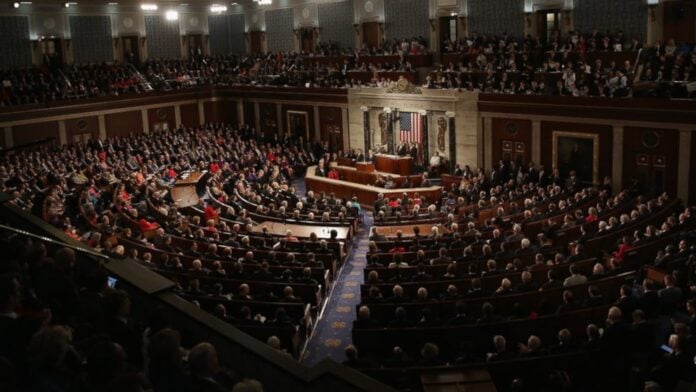For decades, American politics followed a familiar rhythm. Democrats could count on racking up huge margins in California, New York, and Illinois, then add victories across the Midwest to pave their way to the White House. Republicans, meanwhile, leaned on strong support in the South, the Plains, and much of the Mountain West.
But as the 2030 Census draws closer, that equation is changing. Analysts warn that by 2032, Democrats could face a shrinking path to 270 electoral votes, while Republicans may enjoy a structural advantage built not on short-term campaigns but on long-term demographic shifts and redistricting power.
For older Americans who have watched decades of political battles play out, this moment feels like history turning a page — with the very map of the nation itself being redrawn.
Population on the Move
The key driver is migration. Across the last two decades, millions of Americans have left states with high taxes, dense regulations, and soaring housing costs. California, New York, and Illinois have been at the center of these departures.
Where are people going? To the Sun Belt and the South. Texas, Florida, Arizona, and the Carolinas are among the biggest winners, with strong job markets, warmer weather, and lower costs of living attracting new residents year after year.
Because congressional seats — and thus electoral votes — are tied directly to population, these moves carry enormous political consequences. The Census numbers are clear:
-
- California, New York, and Illinois are projected to lose seats in the House of Representatives.
- Texas could gain at least two seats.
- Florida is expected to gain one or more seats.
- States such as Arizona and the Carolinas are also poised for growth.
Every new congressional seat means an extra electoral vote. That means political power is not only shifting geographically but also tilting toward regions where Republicans hold stronger ground.
The Democratic Map Narrows
Right now, Democrats still have multiple paths to victory. The so-called “blue wall” of Michigan, Wisconsin, and Pennsylvania has been central to recent wins. In 2020, those three states formed the backbone of Joe Biden’s victory.
But by 2032, even winning that trio may not be enough. Analysts point out that Democrats would also need to carry smaller swing states — places like Nevada, New Hampshire, and Arizona. Losing even one of those could tilt the race toward Republicans.
For a party that once relied on commanding leads in California and New York to cushion their numbers, the margin for error is disappearing.
Republican Advantages
Republicans, on the other hand, are positioned to benefit in several ways.
First, they already dominate much of the South and Sun Belt — regions experiencing the fastest growth. That means even if Republicans lose a key battleground, they may still have multiple routes to 270 electoral votes.
Second, Republican-led legislatures in states like Texas and Florida are expected to control redistricting after the 2030 Census. By drawing favorable maps, they can reinforce their dominance in the House and add further security to their electoral college numbers.
As one political analyst put it: “For Republicans, the road to the White House is becoming wider. For Democrats, it’s narrowing.”
Legal Battles Are Inevitable
Of course, redistricting doesn’t happen quietly. Every round brings legal challenges, and this one will be no different. Democrats are already preparing lawsuits aimed at countering what they call partisan gerrymandering. Republicans, for their part, argue that state legislatures are simply exercising the authority granted to them by the Constitution.
California has even called a special election to adjust maps earlier than expected, underscoring how urgently Democrats view the situation.
But even courtroom battles have limits. Judges can rule on lines, but they cannot reverse population movement. As long as Americans continue to leave Democratic strongholds and settle in Republican-leaning states, the overall balance of electoral power will tilt in one direction.
What This Means for 2032 and Beyond
If projections hold, the Republican Party may enter the 2030s with a built-in advantage in the race for the presidency. Democrats, meanwhile, would face the reality of defending a shrinking map — and the pressure of winning every critical swing state just to stay competitive.
For Republicans, this trend suggests that long-term strategy may require less dramatic adjustment. Population growth and reapportionment are already shifting the landscape in their favor. For Democrats, the challenge is more daunting: they must broaden their appeal in the South and Sun Belt or risk being shut out of the presidency for a generation.
A Generational Shift in Politics
For older Americans, this story may feel like déjà vu. In the mid-20th century, the “Solid South” reliably voted Democratic, only to shift Republican over time. Today, another great reshuffling is underway, not in party loyalty alone but in population itself.
Every migration pattern, every Census count, every reapportioned seat tells the story of America changing. Families seeking lower costs of living, retirees moving to warmer climates, businesses relocating to friendlier tax environments — all these decisions ripple outward, reshaping Congress, the presidency, and the nation’s political future.
The battle for the White House has always been fought on the electoral map. But now, the map itself is being redrawn by forces far larger than campaign rallies or TV ads.
The redistricting battles of the coming years will not just be about lines on a map. They will be about the future of American politics. Republicans stand to gain as population shifts push electoral power southward and westward. Democrats, meanwhile, face the challenge of adapting to a new reality where their once-reliable path to victory may no longer exist.
The story of the 2030s may already be written in Census numbers and moving vans. The question for both parties is whether they can adapt fast enough to meet a political landscape reshaped by the people themselves.


